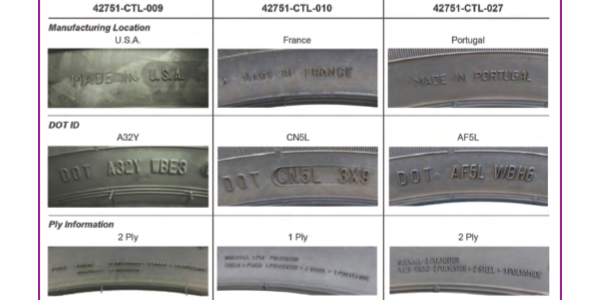
Models: 2014-2016 CR-V
The Honda CR-V uses an indirect TPMS system that uses the rolling circumference of the tire to determine the pressure in the tire. Differences in sidewall construction and weight of a replacement tire can cause the rolling circumference to change if a single tire is replaced. Because of the way indirect TPMS works, those differences will cause the Low Tire Pressure/TPMS indicator to come on.
One of the original equipment tires is the Continental CrossContact LX, size 225/65R17 (P/N 42751-CTL-010, DOT ID CN5L). Made in France, it has a 1-ply sidewall construction. These tires have been discontinued, but there’s a limited supply still available until they run out. The official replacement is now made in Portugal. This tire (P/N 42751-CTL-027, DOT ID AF5L) has a 2-ply sidewall construction. There’s also a U.S.-made tire (P/N 42751-CTL-009, DOT ID A32Y) that will work. It has a 2-ply sidewall construction, but it’s a bit heavier than the French- and Portuguese-made tires.
The online owner’s manual recommends replacing all four tires at the same time. But if that’s not practical, the French- and Portuguese-made tires should be replaced as a pair (right and left front tires, right and left rear tires). Since the U.S.-made tires are heavier than the French- and Portuguese-made tires. all four tires must be replaced.













